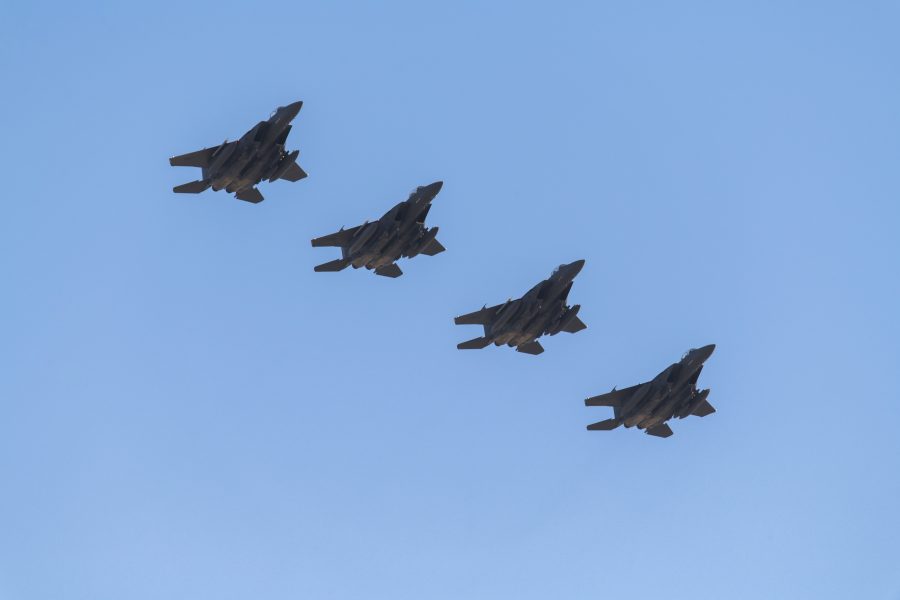Air superiority still matters, but not necessarily in the case of Russia and Ukraine, Air Force Chief of Staff Gen. David W. Allvin said May 13, as he delved into the lessons learned from the ongoing conflicts in the region and the Middle East.
“Air superiority still matters, and we need to understand we’re probably not going to be able to do it the way we used to, nor is it necessary,” said Allvin at a Council on Foreign Relations event.
Allvin’s comments build on remarks both he and Vice Chief of Staff Gen. James C. “Jim” Slife have made in recent months, arguing that the service must change how it defines and pursues air superiority, an essential tenet of its doctrine.
The Air Force defines air superiority as essential, but its significance varies depending on mission objectives, requiring adaptable capabilities for commanders. Allvin argued that air superiority’s traditional significance has altered due to the evolving nature of warfare—a point he first made during the AFA Warfare Symposium in February.
Allvin said air superiority demands consistent capacity and coordination with other domains to fully exploit the battlefield, an area where both Russia and Ukraine have been lacking.
“Neither side has been able to have much of a continued momentum,” the general said. “Largely, because they haven’t been able to control from the air and be able to support a combined arms operation.”
And while the USAF is not involved in the conflict, the results carry implications for the U.S.
“The traditional idea of how American airpower is, we have used our airpower to roll back the enemy air defenses, and then freedom to and freedom from attack, and the airspace is ours for a long period of time,” said Allvin. “But it’s also not necessary, because if you have the ability to gain air superiority and synchronize it with the reason why you have it to enable a combined arms fight, then it’s still effective. But right now, neither side is able to do that, because they aren’t able to leverage that. And even if they could, the electromagnetic spectrum and electronic warfare is alive and well in that country.”
Modern aircraft rely on electronic warfare support to penetrate heavily defended air space. Experts suggest achieving air superiority over areas controlled by capable adversaries may require pairing low observable combat aircraft like the F-35 with electronic warfare capabilities.
Last month, the Air Force’s Vice Chief of Staff, Gen. James C. “Jim” Slife, also explored the shifting dynamics of air superiority, citing the explosion of small, one-way attack drones on the frontlines of Ukraine and against U.S. outposts in the Middle East. Slife cited the defense of Israel against Iranian drone attacks in April as an example of an effective layered air defense, where the U.S. and its partners intercepted missiles and drones launched from Iran, Iraq, Syria, and Yemen. Allvin also cited the significance of the episode.
“There’s a lot that went into what turned out to be a quite successful response to the salvo that Iran tried, because, had that succeeded, that might have definitely blown the top off, but it didn’t,” said Allvin.
U.S. Air Force F-15E and F-16 fighters shot down more than 70 drones during the attack, which involved over 100 ballistic missiles, 30 land-attack cruise missiles, and 150 drones. U.S. and Israeli officials claimed to intercept “99 percent” of the drones and missiles, with Israel taking out the majority of the threats.
“There’s so much that went on behind the scenes, the actual the orchestration of the actual event was remarkable,” said Allvin. “It was mostly due to the work, the coordination that was done ahead of time.”
Allvin said broader U.S. efforts in the region helped “keep the Middle East from boiling over,” serving as a testament to the effective treatment of allies and partners in the region.
Air Force leaders have been consistently hammering home the importance of integrated air and missile defenses (IAMD) as of late. The U.S. and NATO allies have expanded the role of IAMD in exercises, citing the two ongoing conflicts that underscore the need to swiftly counter aerial threats and foster early collaboration.
